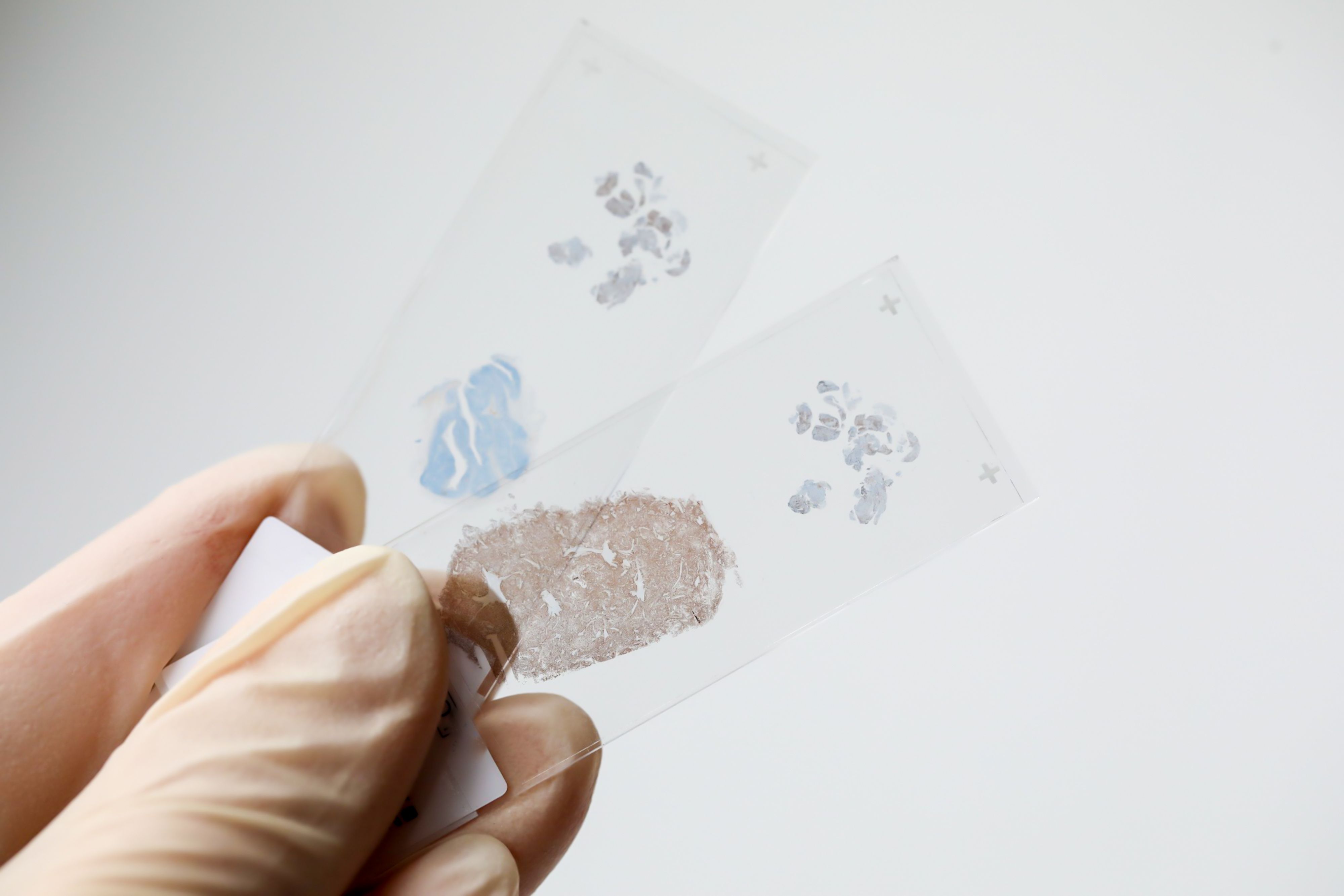- Center on Health Equity and Access
- Clinical
- Health Care Cost
- Health Care Delivery
- Insurance
- Policy
- Technology
- Value-Based Care
Use of Immunohistochemistry in Melanoma Diagnosis Has Grown, but More Research Is Needed
A retrospective, cross-sectional study analyzed national trends of immunohistochemistry (IHC) use in the diagnosis of melanoma.
Immunohistochemistry (IHC) has emerged as a clinical tool in skin biopsies to help inform diagnoses and treatment decisions for patients with melanoma; however, more research is needed to understand the best uses for IHC in this patient population, according to a recent study published in JAMA Dermatology.
Immunohistochemistry Slide | image credit: Lyudmila - stock.adobe.com

In the realm of skin cancers such as melanoma, diagnostic processes can present challenges for clinicians due to interpathologist variability. While melanoma, among other skin cancers, is often diagnosed following histomorphologic assessments of hematoxylin-eosin-stained slides, the study authors pointed to the growing value of IHC in supporting these clinical conclusions.
The use of IHC has grown more popular in recent decades, with its use in melanoma cases jumping from 5%-25% between the years 2001-2015, the authors added. Additionally, they cited more recent research that reported a single clinic’s use of IHC stains in 64% of more than 350 melanoma cases in an 18-month stretch. While these data suggest that the use of IHC is increasing, literature regarding IHC in the diagnosis of melanoma, along with data on national trends, is lacking. To address these gaps in knowledge, researchers conducted a study to analyze the trends over time and paint a clearer picture of the use of IHC in melanoma diagnoses.
Data were gathered on patients with invasive or in situ melanoma from the Surveillance, Epidemiology, and End Results (SEER)-Medicare database between January 2000 and December 2017. Patients were excluded if they received Mohs surgery, a regional lymph node procedure (or if it was unknown), or if they had been diagnosed with cancers of another site in the 6 months prior to or following their diagnosis of melanoma.
A total of 116,117 patients with melanoma contributing 132,547 tumors were included. The researchers observed that the use of IHC increased over time across all different melanoma stages and occurred in 29% of in situ cases and 75% of distant cases. While all SEER registries demonstrated the expansion of IHC use, the authors noted significant variability across these registries. For example, considering all study years, the lowest reported use took place in Detroit Michigan (22% of cases, 1193 of 5491) whereas the highest use was recorded in both San Jose-Monterey, California (44%, 1660 of 3796 cases) and Louisiana (44%, 2271 of 5166 cases). Examining the year 2017, Kentucky (39%, 186 of 478 cases) and Atlanta, Georgia (39%, 144 of 374 cases) recorded the lowest use and New Mexico had the highest (68%, 142 of 208 cases).
In this analysis, the authors found that higher recorded use of IHC was linked to growing poverty: the most impoverished areas used IHC at rates of 38% (4442 of 11,827 cases) whereas areas with lesser poverty used IHC at rates of 31% (13,400 of 43,483 cases). The authors also noted that melanoma mortality rates were stable throughout their study period; however, diagnostic incidences increased. In total, throughout the study period, the utilization of IHC rose from 11% in 2000 to 51% in 2017 in the observed registries.
“Multiple factors could contribute to the rising use of IHC. Improved IHC stains and new antibodies have been introduced, and they may improve diagnostic accuracy. In addition, newly graduated pathologists might be more likely to have been trained to interpret skin biopsies with IHC support,” the Ojukwu et al theorized.
Due to the high degrees of variability witnessed in the SEER registries, the authors conclude by highlighting the need for future investigations to help determine where IHC is the most valuable and create appropriate guidelines for its use.
Reference
Ojukwu K, Eguchi MM, Adamson AS, et al. Immunohistochemistry for diagnosing melanoma in older adults. JAMA Dermatol. Published online March 56, 2024. doi:10.1001/jamadermatol.2023.6417
Dr Kathy Zackowski Discusses the Importance of Rehabilitation Research and Trials in MS
April 26th 2024Kathy Zackowski, PhD, National MS Society, expresses the inherent value of quality rehabilitation trials for broadening clinical understandings of multiple sclerosis (MS) and bettering patient outcomes.
Read More
Examining Low-Value Cancer Care Trends Amidst the COVID-19 Pandemic
April 25th 2024On this episode of Managed Care Cast, we're talking with the authors of a study published in the April 2024 issue of The American Journal of Managed Care® about their findings on the rates of low-value cancer care services throughout the COVID-19 pandemic.
Listen
Navigating Health Literacy, Social Determinants, and Discrimination in National Health Plans
February 13th 2024On this episode of Managed Care Cast, we're talking with the authors of a study published in the February 2024 issue of The American Journal of Managed Care® about their findings on how health plans can screen for health literacy, social determinants of health, and perceived health care discrimination.
Listen
